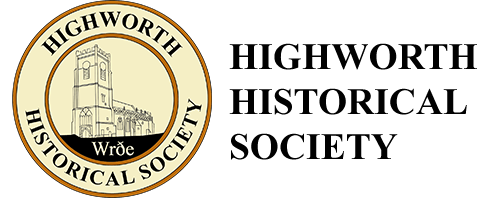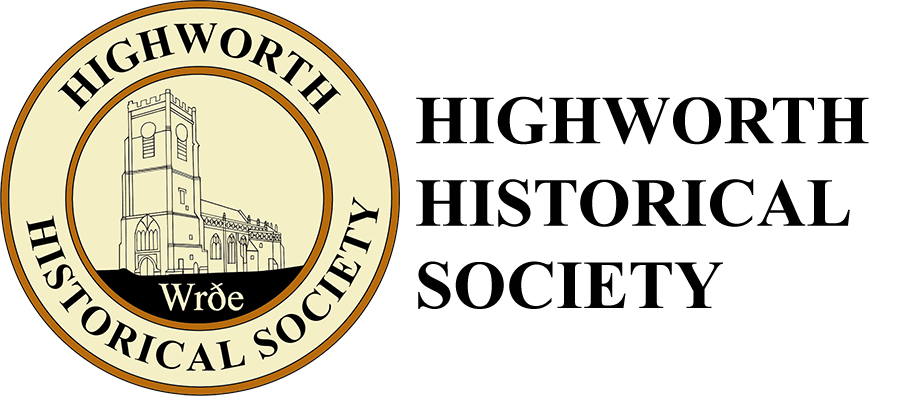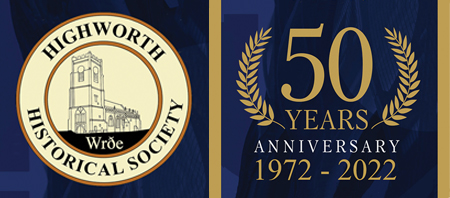Lest We Forget Continued (page 6)
Olly Ely knew what being under fire was all about, having served with the Royal Artillery during the First World War. Luckily no one was hurt during this incident .
In July 1941 Geoff WRIGHT, who was born and brought up in Coleshill village, volunteered for the Royal Navy at the age of seventeen.
D/JX 568446 Able Seaman Torpedoeman Geoffrey John Wright served on HMS Fernie? (L11) which was a Hunt Class Type1 Escort Destroyer with a compliment of 146 crew. She had been built at Clydebank in January 1940, and was scrapped at Port Glasgow on 7th November 1956.
During action stations Geoff was in the forward magazine pushing up 4-inch shells to keep the guns firing. At cruising stations he was on depth charges. Most of the time HMS Fernie was engaged in patrolling the Atlantic and in taking cargo ships to Greenock for the Russian convoys.
With the approach of D-Day, HMS Fernie was assigned to part of the task force for the invasion of Europe. Early on the morning of 6th June 1944 she sailed from Sheerness and linked up with the large invasion fleet at a pre-arranged point nicknamed “Piccadilly Circus”, south of the Isle of Wight, then crossed the Channel along routes cleared by minesweepers.
On 11th June HMS Fernie was in action off the Normandy coast and was involved in the rescue of the crew of HMS Halsted, an American built liberty ship being used as a troop carrier. She had been blown in half by enemy action, one half had sunk, and the other half was still afloat. After rescuing the crew of the Halsted, HMS Fernie had to sink the half of the liberty ship which had become a hazard in the shipping lane. The crew of HMS Halsted later presented a plaque to HMS Fernie in appreciation of services rendered to them after enemy action on 11th June 1944.
After the initial landings, HMS Fernie was involved in helping to escort the Mulberry Harbour across the channel to Normandy. Also during June 1944 she picked up an RAF Fighter pilot, Flight Lt Fox, who had ditched in the English Channel. Sadly he died shortly afterwards and was buried at sea with full honours.
During July the aircrew of a German aircraft were picked up from the sea.
Like many ships in the Royal Navy, HMS Fernie had a small dog as a mascot, and on one occasion the crew got him drunk and he fell overboard, but was quickly rescued.
On the 3rd November 1944, Geoff started a course to become a Leading Torpedo Operator. This was at ‘Defiance’, a shore-base at Plymouth, which consisted of three large wooden ships with coal burners moored together at the quayside. Most of the training was on board a submarine which set sail each morning, returning to dock each evening. After firing dummy torpedoes the ratings were then instructed to go out by rowing boat to fetch them back for re-use. Before the course ended Geoff was discharged from the navy as he had only signed on for the duration of the war.
After leaving the Navy he returned to Coleshill, and worked as a master bricklayer and later as a building site foreman until his retirement.
Memories of the Second World War, By Jean MOORE (nee Routledge).
“At the outbreak of war in 1939 I was employed by an Insurance Company in Swindon. This was classified as a reserved occupation and hence I was unable to volunteer for the Forces or change my employment. In early 1939 volunteers had been invited to take First Aid Courses organised by the St John Ambulance Association. I decided to do so together with others from Highworth including Joyce Woodbridge (nee Avery), John Roberts and Fred Wood.
At the outbreak of war a First Aid post was established in the Old Infants School. I can remember learning to drive the canvas covered ambulance. Whenever the sirens sounded, we had to report to the First Aid Centre as quickly as possible complete with our tin hats and gas masks.
Dr Robertson and Sir Noel Arkell were two of the people in charge. We had camp beds to use if possible. I can remember being roused by Sir Noel and asked to make tea for everyone before we dispersed to our homes to get breakfast and take up our daytime jobs.
As war progressed more and more men and women were called up and I received my papers in April 1942. The choice given me was the A.T.S. or Land Army- recruitment for the WRNS and WAAF having been closed. I chose the Land Army and was accepted as a member on 20th April 1942.
I went to work for Mrs Hollas at Parsonage Farm. When I arrived she already had four Land Girls, Elizabeth (Lizzie) Bolton, and Joan Humby who were living at the farm, and Mrs Wilson and Miss Kane who were both in lodgings in Highworth.
Later we were joined by Kathleen Howse (nee Silk), Joan Bryant and Joan Slack, all from Highworth.
When I met Mrs Hollas she told me to report the next morning at 7 am and that I would be in charge of a milk round using a horse and float in part of Swindon. A van would take me as far as Stratton St Margaret where the horse and float were kept. I was also informed that Derek Ferris, at that time quite a young lad, would help me. The next morning I approached the farm with some trepidation. Miss Kane was driving the milk van and once all the crates were loaded, we set off. Our crates were off-loaded at Stratton and the van proceeded to Swindon to do another round. Derek showed me how to feed, water and groom the horse and finally how to clean the stable. Then began the intricacies of harnessing the horse to the float. How ever we squeezed beside that enormous carthorse to get to the front of the stable and its manger still astounds me. Duly harnessed and the milk loaded, we proceeded round Kingsdown, Rodbourne and Stratton St Margaret. Thankfully both Derek and the horse were well versed in the procedures. When “zoning” was introduced for milk deliveries, we relinquished the horse and cart round and in lieu were given comparable extra customers in the Walcot Road area of Swindon where the van delivered. The idea behind this arrangement was to avoid duplication of delivery vans in any area and so to conserve the short supply of fuel.
My duties changed and, with three other Land girls, we took charge of the milk round with the van, looked after the pigs (large whites and Wessex saddlebacks) and washed the cows prior to milking. Looking after the pigs involved feeding, cleaning out, and general care and when the U.S. Forces were in the area, collecting their swill and boiling it for the pigs”.


